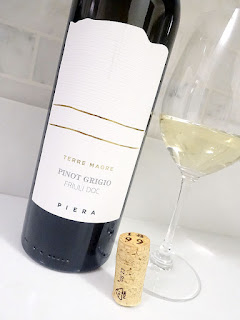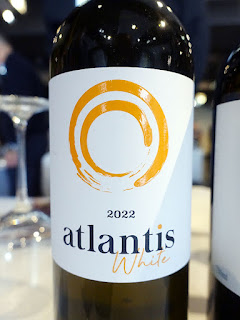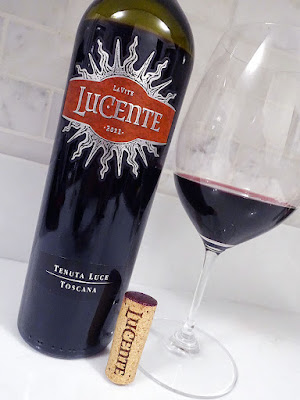red wine review is an excellent, sustainably crafted Pinot Noir from the Côte de Nuits-Villages appellation in Burgundy. Brand new to our market, it arrived in Ontario as an Online & Flagship Exclusive in the recent LCBO VINTAGES New Release Collection, with good quantities still available for purchase.
It is produced by Domaine Pansiot, a small, family-owned estate that was created in 1981 by Eric Pansiot in the commune of Corgoloin, within the Côte de Nuits district in northern Burgundy, between Beaune and Nuits-Saint-Georges, near the border where the appellations of Côte de Nuits and Côte de Beaune separate. The area of Corgoloin has a strong tradition of wine, agriculture, and quarrying dating back to 1847.
Eric Pansiot established the estate with just 4 hectares of vines, but in 1991 he acquired a further 5 hectares of vines. In 2000, Eric created a SCEA agricultural company with his wife, Chantal Pansiot, and a gentleman from Welsh, Marc Thomson, and together they had 15 hectares of vines. Joining the family business in 2005 was Emilie Pansiot, daughter of Eric, and in the ensuing years the company continued to grow and expand by acquiring plots in the communes of Meursault, Gevrey Chambertin, Beaune, Chorey les Beaune, and Savigny les Beaune. Today, they have 21 hectares of vines across 19 different appellations, producing wines using grapes from all of these Burgundian appellations.
This red wine is crafted with 100% Pinot Noir that was grown in the appellation of Côte de Nuits-Villages, but is mainly composed of grapes grown in the commune of Corgoloin. The terroir in this area consists of hill-slopes that are gentle and regular, and carved into the hard limestones of the Upper Bathonian, during the Jurassic period of about 167 million years ago. In the upper part, the brown soil is only slightly limy, while lower down there is a thick layer of pebbly scree, and at the foot of the slope there is an extensive area of brown soil over accumulated alluvium.
The 2021 vintage was undoubtedly a challenging one with wild and unpredictable weather. The growing season began off the back of a balmy winter, which initiated early vine growth and budbreak. Because of the early start, the vines were susceptible to the elements, and in April the temperatures took a sharp dive and included a bout of vicious frost, followed by snow. Summer arrived with depressing, intermittent rains throughout. Spirits were finally raised in June, when temperatures rose and there were enough sunny days to dry out the vines, which also resulted in early flowering. However, heavy rain throughout July and August meant that growers had to be vigilant in keeping both rot and disease at bay. The weather finally eased up before veraison, allowing the fruit to dry out and ripen, with the reds unusually ripening before the whites. Overall, this was one of Burgundy's smallest ever vintages, which was also cooler-than-usual. The wines that were produced are very good to excellent, offering a classic and refined Burgundian style. Let's see how this 2021 Pinot Noir from Burgundy is tasting tonight...
100% Pinot Noir assembled mainly from the Corgoloin commune. The fragrant, medium-high intensity nose offers cool aromas of red and black cherries, and red currant with whiffs of savoury mushroom, forest floor, cinnamon spice, and roses adding intrigue and complexity. It is intensely flavoured on the mid-weighted palate with lovely red currant, cran-sour cherry, raspberry, cinnamon spice, roses, and red plum flavours, plus some minerality and black tea notes. Juicy acids are fresh and lively, while the light tannins are fine-grained with good structure. Shows elegance throughout, with red currant, cherry, raspberry, and mineral notes lingering on the long, crisp finish. Gorgeous and a highly recommended buy! Score: 93 pts
Other fine wines by Domaine Pansiot can be ordered through their Agent - Connexion Oenophilia / Noble Estates Wines & Spirits.
It is produced by Domaine Pansiot, a small, family-owned estate that was created in 1981 by Eric Pansiot in the commune of Corgoloin, within the Côte de Nuits district in northern Burgundy, between Beaune and Nuits-Saint-Georges, near the border where the appellations of Côte de Nuits and Côte de Beaune separate. The area of Corgoloin has a strong tradition of wine, agriculture, and quarrying dating back to 1847.
Eric Pansiot established the estate with just 4 hectares of vines, but in 1991 he acquired a further 5 hectares of vines. In 2000, Eric created a SCEA agricultural company with his wife, Chantal Pansiot, and a gentleman from Welsh, Marc Thomson, and together they had 15 hectares of vines. Joining the family business in 2005 was Emilie Pansiot, daughter of Eric, and in the ensuing years the company continued to grow and expand by acquiring plots in the communes of Meursault, Gevrey Chambertin, Beaune, Chorey les Beaune, and Savigny les Beaune. Today, they have 21 hectares of vines across 19 different appellations, producing wines using grapes from all of these Burgundian appellations.
This red wine is crafted with 100% Pinot Noir that was grown in the appellation of Côte de Nuits-Villages, but is mainly composed of grapes grown in the commune of Corgoloin. The terroir in this area consists of hill-slopes that are gentle and regular, and carved into the hard limestones of the Upper Bathonian, during the Jurassic period of about 167 million years ago. In the upper part, the brown soil is only slightly limy, while lower down there is a thick layer of pebbly scree, and at the foot of the slope there is an extensive area of brown soil over accumulated alluvium.
The 2021 vintage was undoubtedly a challenging one with wild and unpredictable weather. The growing season began off the back of a balmy winter, which initiated early vine growth and budbreak. Because of the early start, the vines were susceptible to the elements, and in April the temperatures took a sharp dive and included a bout of vicious frost, followed by snow. Summer arrived with depressing, intermittent rains throughout. Spirits were finally raised in June, when temperatures rose and there were enough sunny days to dry out the vines, which also resulted in early flowering. However, heavy rain throughout July and August meant that growers had to be vigilant in keeping both rot and disease at bay. The weather finally eased up before veraison, allowing the fruit to dry out and ripen, with the reds unusually ripening before the whites. Overall, this was one of Burgundy's smallest ever vintages, which was also cooler-than-usual. The wines that were produced are very good to excellent, offering a classic and refined Burgundian style. Let's see how this 2021 Pinot Noir from Burgundy is tasting tonight...
Tasting Note:
DOMAINE PANSIOT CÔTE DE NUITS-VILLAGES 2021 - Sustainable, AC, Burgundy, France (#34252) (XD) - $48.95100% Pinot Noir assembled mainly from the Corgoloin commune. The fragrant, medium-high intensity nose offers cool aromas of red and black cherries, and red currant with whiffs of savoury mushroom, forest floor, cinnamon spice, and roses adding intrigue and complexity. It is intensely flavoured on the mid-weighted palate with lovely red currant, cran-sour cherry, raspberry, cinnamon spice, roses, and red plum flavours, plus some minerality and black tea notes. Juicy acids are fresh and lively, while the light tannins are fine-grained with good structure. Shows elegance throughout, with red currant, cherry, raspberry, and mineral notes lingering on the long, crisp finish. Gorgeous and a highly recommended buy! Score: 93 pts
Other fine wines by Domaine Pansiot can be ordered through their Agent - Connexion Oenophilia / Noble Estates Wines & Spirits.



































